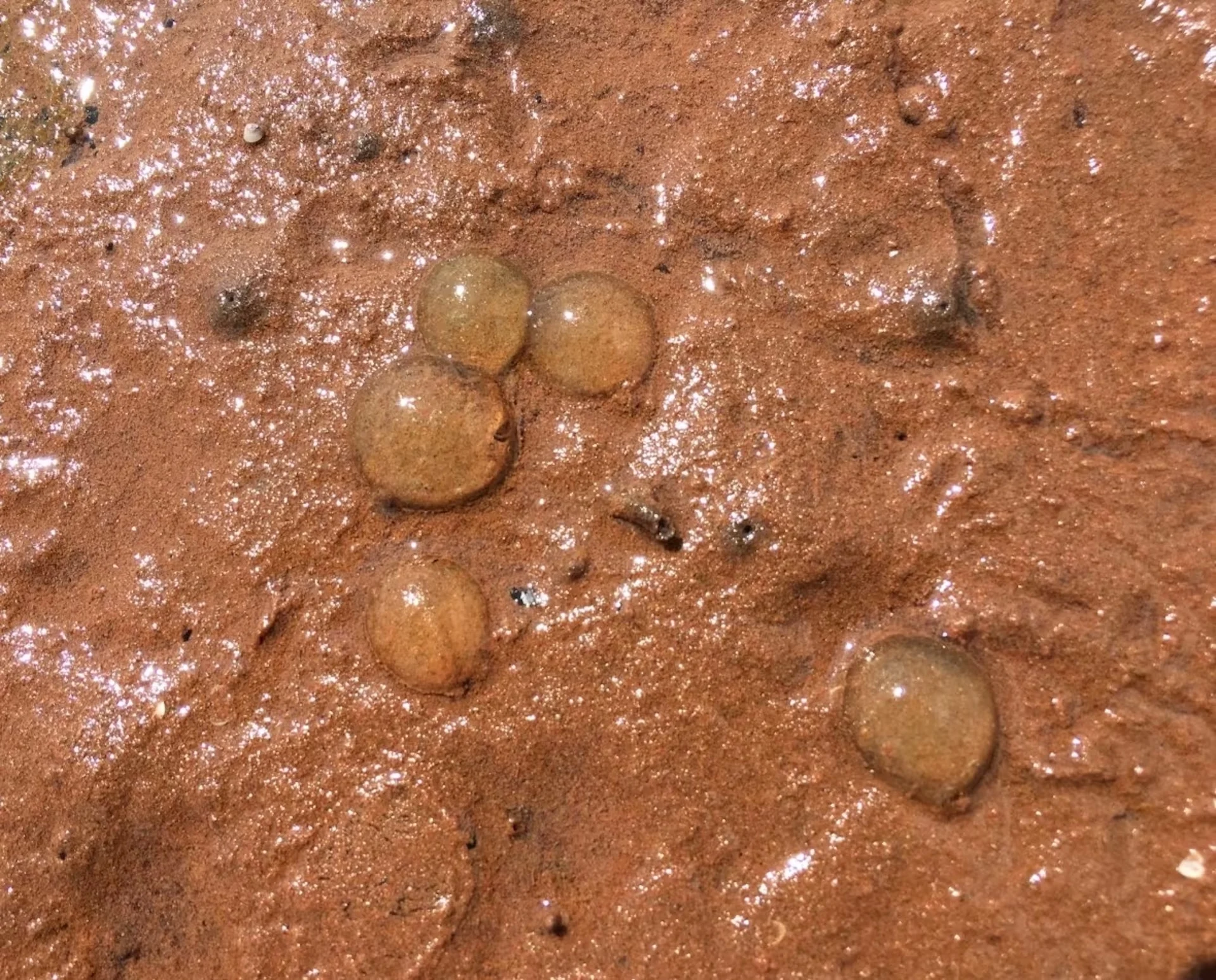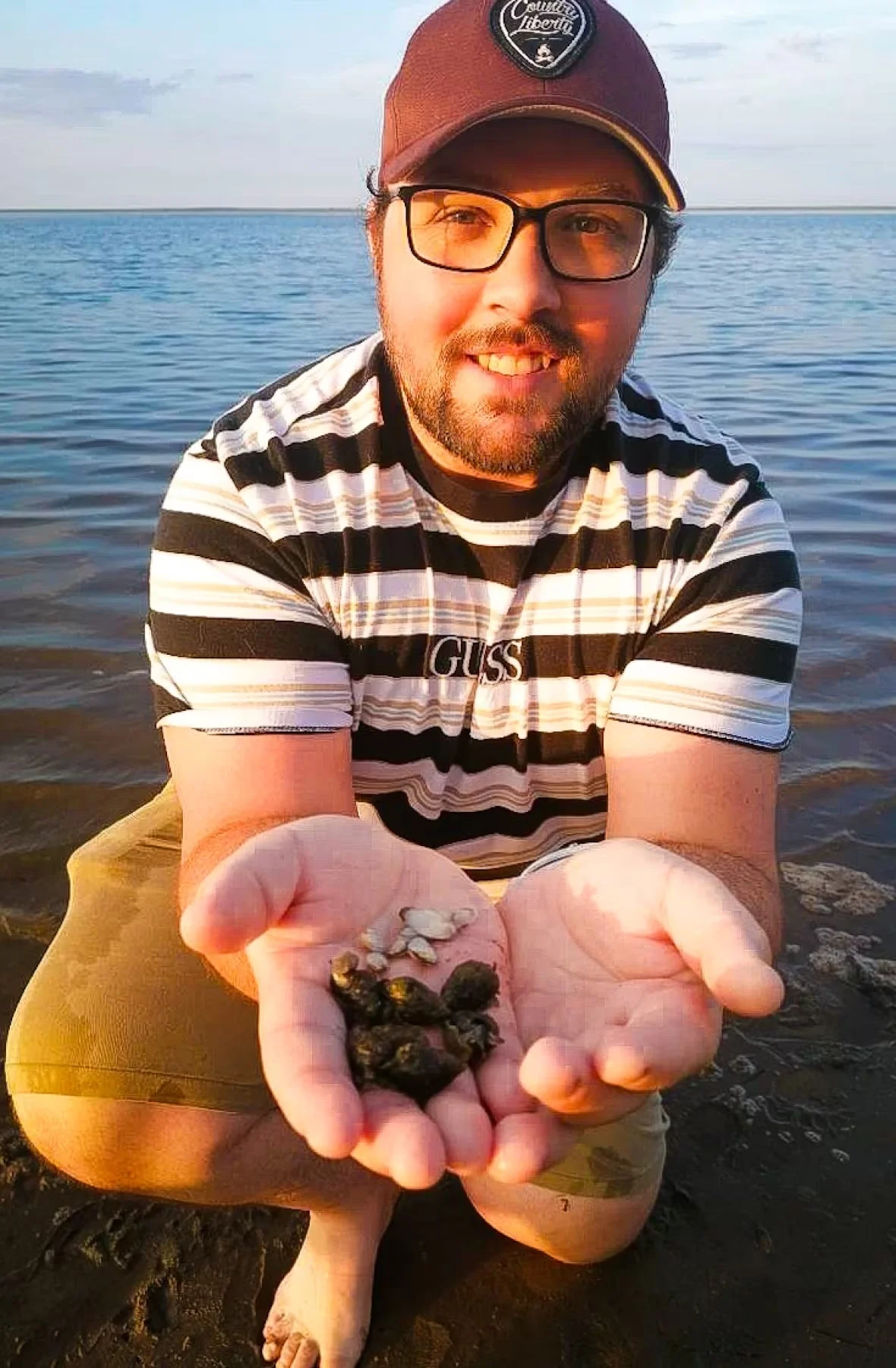
They don't sting, but sea gooseberries are tough, little critters
While walking along the red sands of a P.E.I. beach, you might notice a little, transparent blob along the shoreline.
No, it's not a jellyfish or a drop of water. What you might be looking at is a small animal known as a sea gooseberry.
Jeff Clements, an aquatic biologist with Fisheries and Oceans Canada, says the creatures are a type of ctenophores, commonly known as comb jellies.
"They have these long rows of little tiny hairs along their body called 'cilia' that continuously and synchronously beat really fast," Clements said. "When they're beating, they kind of look like hair combs."
SEE ALSO: This jellyfish was the terror of the sea 500 million years ago
Comb jellies are a completely different group of animals than jellyfish, which are from the phylum cnidaria.
Clements said sea gooseberries look like round or oval blobs. At their biggest, they can be the size of a large grape.
Sticky tentacles
Sea gooseberries have feathery-looking tentacles, just like jellyfish.

Jeff Clements is an aquatic biologist with Fisheries and Oceans Canada in Moncton, N.B. (Submitted by Jeff Clements)
But have no fear: These little guys don't sting.
"Instead of stinging cells, which jellyfish use to protect themselves and catch and stun their prey, ctenophores actually have sticky cells in their tentacles," Clements said.
"They use them like a glue to capture prey in the tentacles, and then move that to their mouths."
Sea gooseberries are quite low on the food chain, Clements said. They eat little animals called zooplankton, often the larvae of bigger animals in the sea.
Their main predators are fish, but crabs and shrimp also eat them if the sea gooseberries swim too close to the bottom.
Beach-goers can typically come across a sea gooseberry at low tide when the little creatures wash up near the shoreline.
They're hard to see in the water. But if you pay enough attention, you might see them if you're swimming in the ocean.
WATCH: Deep-sea 'blob' is first new species to be classified by video
"You have to look really, really closely," Clements said.
"If you're out swimming in the evening or the early morning — especially if you're swimming in an area where, when you dive under the water, it gets really cold — you may see them floating around in the water column there."
Clements said sea gooseberries can be found all summer long and sometimes into the fall. But he said early summer between May and July is the most likely time to spot them, as that's their peak spawning period.
Powers of regeneration, disappearing buttholes
Clements said sea gooseberries are quite tough, so there's no harm picking them up on the beach as long as you don't "smash them around."
Adult sea gooseberries can actually regenerate some damaged tissue if, say, an animal comes along and takes a bite, Clements said.
The animals can also put on quite a light show through the movement of tiny hairs on their body.
"When [the cilia] beat synchronously in the water column, they reflect light in an iridescent way. So they can be these magnificent rainbow colours while they're swimming."
But the coolest thing about sea gooseberries, in Clements' opinion?
"Instead of having a sphincter like humans do, which is the ring of muscles that closes our buttholes, these animals actually close their butthole by fusing tissue over the top of it," he said.
"So, in essence, the anuses, once the animal is done pooping, disappear and then reappear when it needs to poop again."
WATCH: Meet the invasive vampire-like fish that lives in the Great Lakes
Thumbnail courtesy of Jeff Clements via CBC.
The story was written by Tarini Fernando and originally published for CBC News. It contains files from Island Morning.









